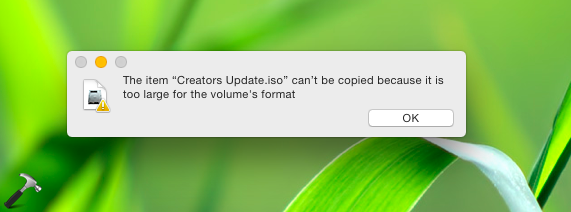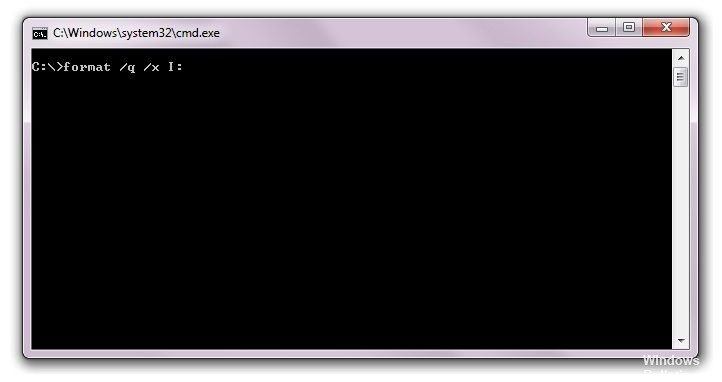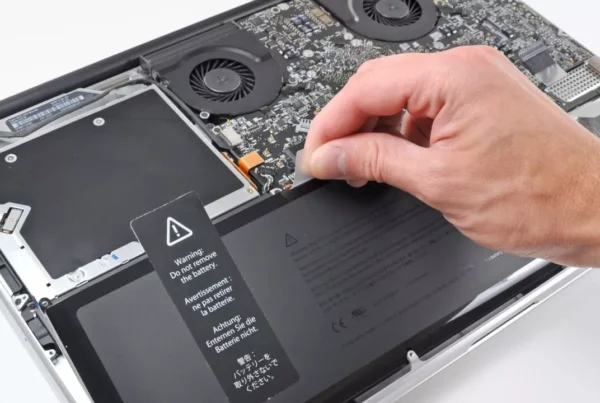RECOMMENDED: Click here to fix Windows errors and get the most out of your system performance
We all know that Windows uses the NTFS file system, while Mac uses the FAT32 file system. Because of the differences between these file systems, disk formatting problems may arise when performing operations on a drive that has been used in one of the operating systems.
Recently, users have encountered this problem. This occurs when you try to copy a 4 GB ISO file to an empty 8 GB USB flash drive in Mac OS X, but Mac does not allow it. The following message always appears during the copy procedure:
The element "
» cannot be copied because it is too large for the volume format.
USB formatting
If the USB device is formatted in “FAT32” format, the user receives the error while transferring data more than “4 GB”. Therefore, in this step we will format the device in another format that supports more than “4 GB”. For that:
- Connect the USB device to a Windows computer.
- Open File Explorer and click on the “This computer” option in the left pane.
Note: Open “My Computer” for Windows 7 and earlier operating systems. - Right-click on the name of the USB stick and select “Format.”
- Click the File System drop-down list and select NTFS or exFAT from the drop-down list.
- Click the Start button without changing any other alternatives.
- Wait until the formatting finishes, copy the file to USB and check if the problem still occurs.
Optimize USB flash drive performance.
1. Connect the device to the computer.
2. Open the Team Management Console.
a) Windows 8
b) Windows XP, Windows Vista, Windows 7, Windows 7, Windows 7, Windows 7
3. Select Device Manager on the left side.
4. On the right, expand the hard drives.
5. Right click on the USB stick and select Properties.
6. Click on the Policy tab.
7. Select Maximize Performance, and then click OK.
Using a different file manager
This bug doesn't seem to be so much a hindrance to the APFS file system introduced by High Sierra, its replacement for HFS+, as it is to the Finder itself. For this reason, as noted in your answer, the bug can be fixed with an alternative file manager like Transmit or Commander One1 until Apple decides to publish the answer.
CONCLUSION
You should now be able to copy your large files by splitting them or converting the hard drive to NTFS! If you have a USB flash drive, read my post about how to format a USB flash drive in NTFS format.
If for some reason you cannot split the file and do not want to convert the file system on the disk to NTFS, the only other feasible solution is to compress the file. Windows 7 and Windows 10 have built-in compression tools, but you can also try third-party tools like 7-Zip, etc.
RECOMMENDED: Click here to fix Windows errors and get the most out of your system performance








